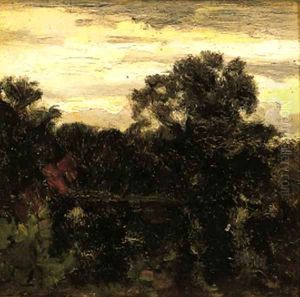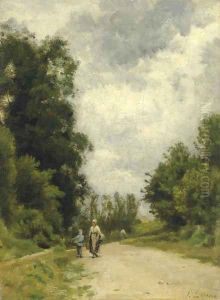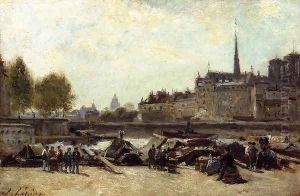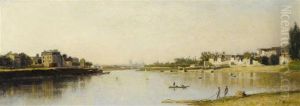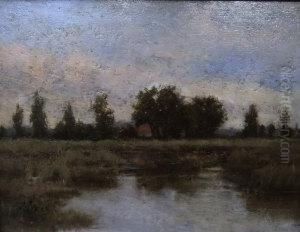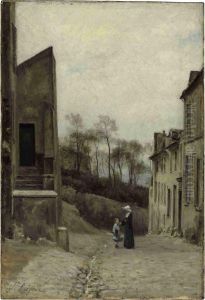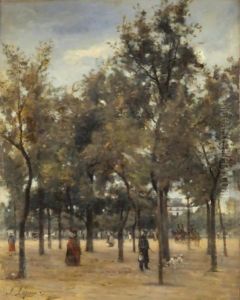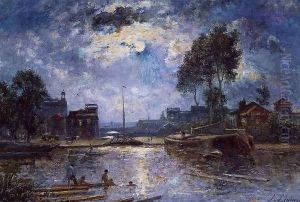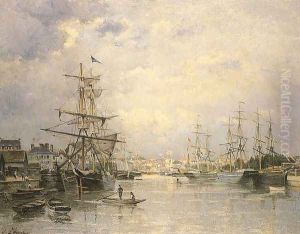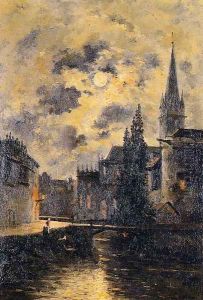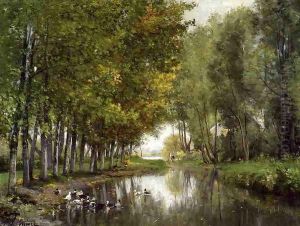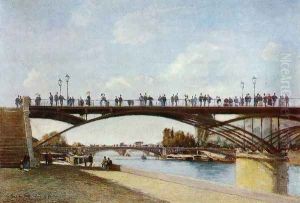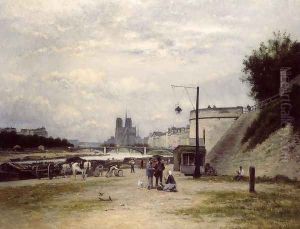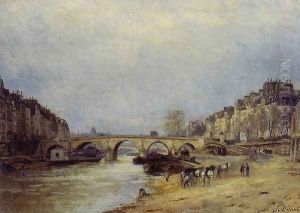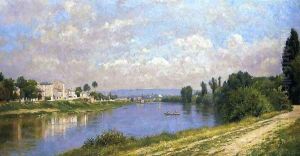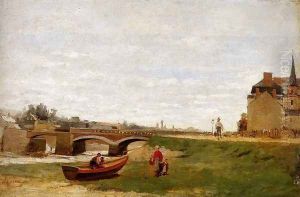Stanislas Lepine Paintings
Stanislas Victor Edouard Lepine was a French painter born on October 3, 1835, in Caen, Normandy. Lepine is best known for his landscapes and scenes of Parisian life, often depicting the River Seine. His work is associated with the Barbizon School and he is considered a precursor to the Impressionist movement. Lepine was particularly skilled in capturing the effects of light and atmosphere in his paintings, a characteristic that would be central to the work of the Impressionists who followed.
Lepine's early life and training are not well-documented, but it is known that he moved to Paris in the 1850s, where he was influenced by the Barbizon painters, particularly Camille Corot. He also admired the works of Johan Barthold Jongkind. Lepine exhibited his works at the Paris Salon for the first time in 1859 and would continue to exhibit there throughout his career.
Despite his contributions to the development of landscape painting in France, Lepine struggled with financial difficulties and received little recognition during his lifetime. It was only after meeting Claude Monet, who admired and supported his work, that Lepine began to gain more attention. Monet's influence led Lepine to adopt a lighter palette and freer brushwork, which can be seen in his later works.
Lepine's paintings often feature the Seine, including the bridges and quays of Paris, rendered in a delicate and harmonious manner. One of his most famous paintings is 'Pont de Grenelle', which shows his ability to capture the play of light on water and the activities of city life with subtlety.
Stanislas Lepine died on September 28, 1892, in Paris. Although he did not achieve significant fame during his lifetime, his work has since been recognized for its importance in the transition from traditional landscape painting to the new style of the Impressionists. Today, Lepine's paintings are held in several major museums, including the Musée d'Orsay in Paris.




